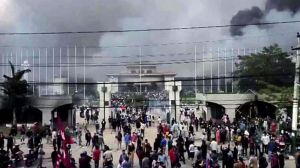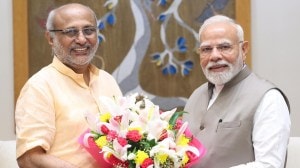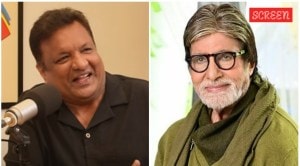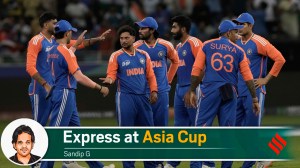In Keralas communist citadel,the enemy is CPM
It will gain momentum if the CPMs involvement is proved,promises RMP secretary N Venu.
Scores of posters line the narrow roads of Onchiyam in Kozhikode,Kerala,each with a portrait of T P Chandrasekharan,the leader who had rebelled against the CPM and was murdered on May 5. Neither supari gangs nor their political masters can stop the storm created by your last breath, reads one sign. You are not a renegade, says another.
Chandrasekharans three-room,tiled house continues to look like a pilgrim centre,with visitors arriving from across the state and including many who had never met him. They pledge solidarity with his wife K K Rama,who has determined to take ahead her husbands fledgling Revolutionary Marxist Party.
This is the village where the states communist movement had taken root in the early 1940s,a culmination of peasant agitations against oppressive landlords. And this is a village that,while forever communist in character,has since seen two movements against the CPM.
The first began in 2008 when the CPM tried to foist a decision on the local leadership a swap of panchayat presidents posts,with the JD(S) being given Eramala in exchange for Azhiyoor. That movement led to the formation of Chandrasekarans RMP,which now rules Onchiyam panchayat and which also has a presence in three other panchayats in the region.
The other movement is taking shape now,following the murder. It will gain momentum if the CPMs involvement is proved,promises RMP secretary N Venu. A large section of the people here believe the CPM had conspired to kill Chandrasekharan, says Venu.
Until the 2008 rebellion,Onchiyam had been one of the CPMs most vibrant area committees. And the party had ruled without bloodshed,unlike in the communist villages of neighbouring Kannur,rocked until recently by constant violence between CPM and Sangh Parivar activists. Even communal tension in the nearby Nadapuram region created no ripples at Onchiyam.
Over the decades
Puravil Kannan,82,has been living with a bullet lodged in his chest since the age of 18,the result of police firing on protesters in 1948. Eight comrades died then and two more died in police custody within a year,making the village part of communist folklore.
Today,the veteran communist is aghast at what the CPM has become. The communist movement had its roots in Onchiyam when farmers fought against exploitative landlords under the leadership of Mandodi Kannan. CPM leaders today should stop acting like landlords. The party has earned the peoples contempt due to the arrogance of the present leadership, says Puravil Kannan,who left the CPM in 2008 to join the RMP.
The Communist Party had reached the village soon after forming its first Kerala unit at Parapram in Kannur in 1939. It was a banned party when the firing took place on April 30,1948. It had planned a secret meeting at Onchiyam and the police arrived in search of Mandodi Kannan. They arrested some persons and were obstructed by a mob,leading to the firing. Mandodi Kannan,who later surrendered,was one of the two who died in custody.
While consistent in its political leanings,Onchiyam has grown from the agricultural village it used to be in the late 1930,when it participated in the kisan movement. Today,it is home to scores of NRIs,businessmen and construction workers. It has sent several people as bakery businessmen and workers to Maharashtra and Karnataka,helping the village prosper.
For 40 years till 2008,the CPM continuously ruled the panchayat. Then the RMP arrived. M K Karunan of Onchiyam,who has been running a bakery in Maharashtra since 1970,says the people could no longer accept what he calls the CPMs right-wing deviation.
We had fought against the dominance of landlords, says Karunan,who like Puravil Kannan joined the RMP in 2008. The attitude of the present CPM leadership is a throwback to those days of landlords dominance.
The CPM this week issued a statement describing the RMP as a balloon puffed up by the Congress and the media. Defending the swap of posts in 2008 as a decision taken by the LDF,it said,Chandrasekharan and others protested against the arrangement because of their parliamentary ambitions… No ideological issue was involved in the formation of the RMP.
No non-communist party has ever been an option here. The presence of the Congress,the BJP and the Indian Union Muslim League is negligible. Though dominated by Hindus,the village is cold to community organisations such as the upper-caste Nair Service Society and the backward-Hindus group Sree Narayana Dharma Paripalana Yogam. Due to the dominance of communists,we could not operate in Onchiyam, admits R K Nanu,an SNDP leader in the town of Vatakara.
After the leader
K K Rama suspects the CPM in her husbands murder,but her father K K Madhavan remains a CPM area leader in the district. Unless it is proved that the murder was done with the connivance of the party,I will remain a disciplined party worker, he says. My daughter has been widowed,but I will not comment against the party at this stage. He agrees,as many have complained,that no CPM leader has visited Chandrasekharans house after the murder. Some of them conveyed their helplessness,he says.
Rama,who was once a state-level leader of CPM student wing SFI,has vowed to carry on the RMP legacy. She alleges that he had been under constant threat from the CPM but felt seeking security would have been pointless. Chandrasekharan used to say that if the CPM decided to eliminate a rival,it would do so anyhow, she says. When alleged CPM workers assaulted RMP leaders,Chandrasekharan had advised restraint,an attitude that improved the RMPs stock in the region.
Chandrasekharan and his colleagues had wanted V S Achuthanandan to come out of the CPM to lead them. Had he intervened at the right time,I believe Chandrasekarans death could have been averted, Rama says.
Photos



- 01
- 02
- 03
- 04
- 05




























